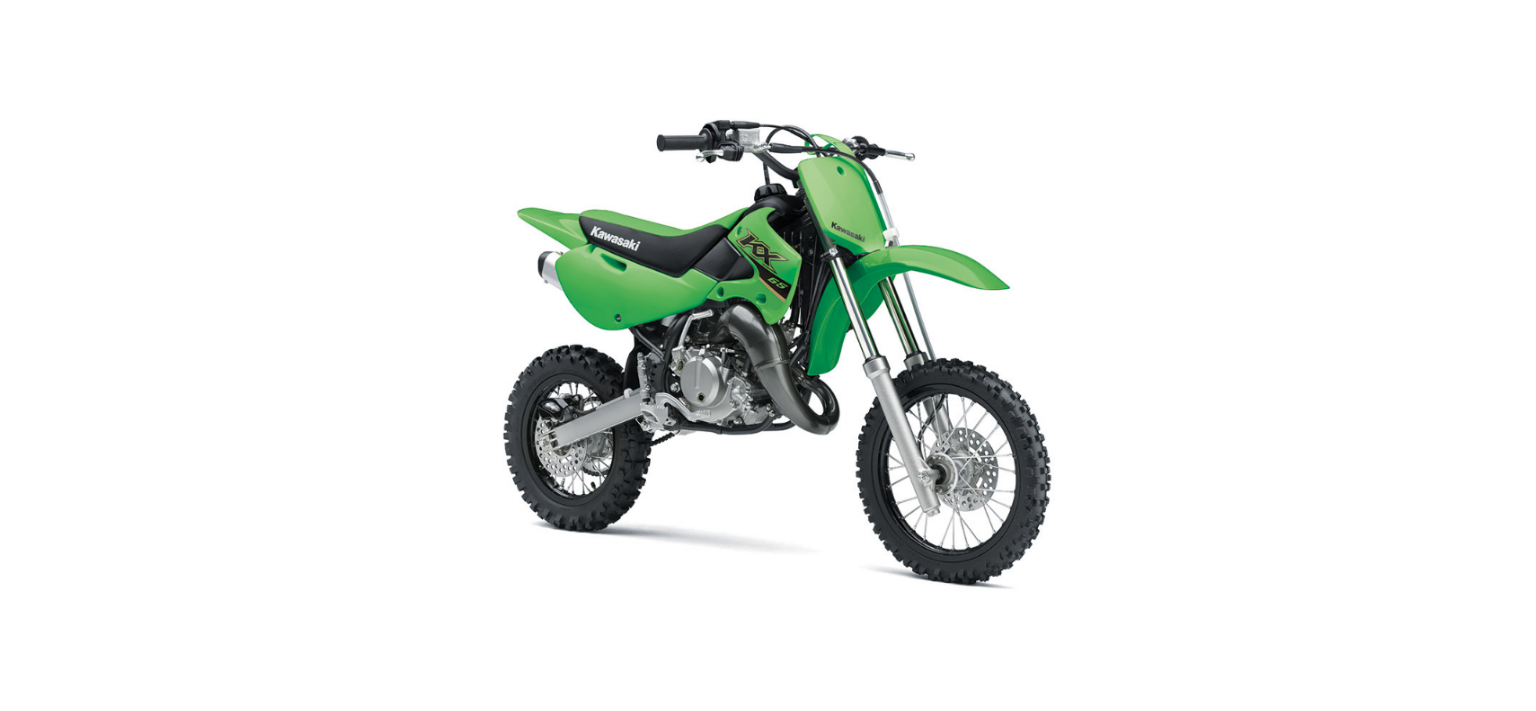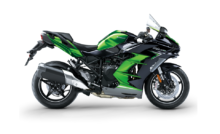2022 Kawasaki KX65 TROUBLESHOOTING GUIDE Owners Manual




2022 Kawasaki KX65 TROUBLESHOOTING GUIDE


TROUBLESHOOTING GUIDE
NOTE
This troubleshooting guide is not exhaustive and does not give every possible cause for each problem listed. It is meant simply as a quick guide to assist you in troubleshooting for some of the more common difficulties.
Starting failure or difficulties
The engine does not turn over
- Cylinder or piston seized
- Crankshaft seized
- Connecting rod small end seized
- Connecting rod big end seized
- Transmission gear or bearing seized
- Kick shaft return spring broken
- Kick ratchet gear not engaging
Fuel does not flow
- No fuel in the tank
- The fuel tap turned off
- Tank cap air vent obstructed
- Fuel tap clogged
- Fuel line clogged
- Float valve clogged
Engine flooded
- Fuel level too high
- The float valve is worn or stuck open
- Wrong starting technique (when the engine is flooded, kick with the throttle fully open to allow more air to reach the engine).
Spark missing or weak
- Spark plug dirty, broken, or gap improperly adjusted
- Spark plug cap or high-tension wiring defective
- Spark plug cap not contacting properly
- Spark plug type Incorrect
- igniter defective
- Ignition coil defective
- Ignition coil resistor defective/disconnected
- Stator damaged
- Wiring shorted or interrupted
Fuel-air mixture incorrect
- Idling adjusting screw improperly adjusted
- Pilot jet or air passage clogged
- Air cleaner element clogged, poorly sealed, or not installed
- Starter jet clogged
Compression low
- Spark plug lose
- The cylinder head was insufficiently tightened
- Cylinder nut lose
- Cylinder or piston worn
- Piston ring worn, weak, broken, or sticking
- Piston ring side clearance excessive
- Cylinder head gasket damaged
- Cylinder head warped
- Cylinder gasket damaged
- Reed valve damaged
Poor low-speed performance
Spark weak
- Spark plug dirty, broken, or gap improperly adjusted
- Spark plug cap or high-tension wiring defective
- Spark plug cap shorted or not contacting properly
- Spark plug type Incorrect
- Igniter defective
- Ignition coil defective
- Stator damaged
Fuel-air mixture incorrect
- Idling adjusting screw improperly adjusted
- Pilot jet or air passage clogged
- Air cleaner element clogged, poorly sealed, or not installed
- Starter plunger stuck open
- Carburetor fuel level too high or too low
- The fuel tank air vent obstructed
- Carburetor holder lose
- Air intake duct lose
Compression low
- Spark plug lose
- The cylinder head was insufficiently tightened
- Cylinder nut lose
- Cylinder or piston worn
- Piston ring worn, weak, broken, or sticking
- Piston ring side clearance excessive
- Cylinder head gasket damaged
- Cylinder head warped
- Cylinder gasket damaged
- Reed valve damaged
Other
- Igniter defective
- Transmission oil viscosity is too high
- Brake dragging
Poor or no high-speed performance
Firing incorrect
- Spark plug dirty, damaged, or gap improperly adjusted
- Spark plug cap or high-tension wiring defective
- Spark plug cap shorted or not contacting properly
- Spark plug type Incorrect
- Igniter defective
- Ignition coil defective
- Stator damaged
Fuel-air mixture incorrect
- The main jet is clogged or the wrong size
- Jet needle or needle jet worn
- Jet needle clip in the wrong position
- Carburetor fuel level too high or too low
- Air jet or air passage clogged
- Air cleaner element clogged, poorly sealed, or not installed
- Starter plunger stuck open
- Fuel supply to carburetor insufficient
- Fuel contaminated with water or foreign matter
- The fuel tank air vent obstructed
- Carburetor holder lose
- Air intake duct lose
- Fuel tap clogged
- Fuel line clogged
Compression low
- Spark plug loose
- The cylinder head was insufficiently tightened
- Cylinder nut loose
- Cylinder or piston worn
- Piston ring worn, weak, broken, or sticking
- Piston ring side clearance excessive
- Cylinder head gasket damaged
- Cylinder head warped
- Cylinder gasket damaged
- Reed valve damaged
Improper acceleration
- Starter plunger stuck open
- Carburetor fuel level too high or too low
- The main jet clogged
- The throttle valve does not fully open
- Air cleaner element clogged
- Muffler clogged
- Fuel contaminated with water or foreign matter
- The cylinder exhaust port clogged
- Brake dragging
- Clutch slipping
- Engine overheating
- Transmission oil level too high
- Transmission oil viscosity is too high
- Crankshaft bearing is worn or damaged
Knocking
- Carbon built up in combustion chamber
- Fuel quality poor or type incorrect
- Spark plug type Incorrect
- Igniter defective
Engine overheating
Firing incorrect
- Spark plug dirty, broken, or gap improperly adjusted
- Spark plug type Incorrect
- Igniter defective
Fuel-air mixture incorrect
- The main jet is clogged or the wrong size
- Carburetor fuel level too low
- Carburetor holder lose
- Air cleaner element clogged, poorly sealed, or not installed
- The air intake duct is poorly sealed
Compression high
- Carbon built up in combustion chamber
Engine overloaded
- Brake dragging
- Clutch slipping
- Transmission oil level too high
- Transmission oil viscosity too high
Lubrication inadequate
- Transmission oil level too low
- Transmission oil quality poor or type incorrect
Coolant inadequate
- Coolant level too low
- Coolant deteriorated
- Cooling system component defective
- Radiator clogged
- Radiator cap defective
- Water pump not rotating
Clutch operation faulty
Clutch slipping
- No clutch lever play
- Clutch cable improperly adjusted
- Clutch cable defective
- The clutch plate is worn or warped
- Clutch spring broken or weak
- Clutch release mechanism defective
- Clutch hub or housing unevenly worn
Clutch not disengaging properly
- Clutch lever play excessively
- Clutch plate warped or too rough
- Clutch spring tension uneven
- Transmission oil deteriorated
- Transmission oil viscosity is too high
- Transmission oil level too high
- Clutch housing froze on the drive shaft
- Clutch release mechanism defective
Gear shifting faulty
The transmission does not go into gear; the shift pedal does not return
- Clutch not disengaging
- Shift fork bent or seized
- Gear stuck on the shaft
- Gear shift positioning lever binding
- Shift return springs are weak or broken
- Shift return spring pin loose
- Shift mechanism arm spring broken
- Shift mechanism arm broken
- Shift drum broken
Transmission jumps out of gear
- Shift fork worn
- Gear groove worn
- Gear dogs and/or dog grooves worn
- Shift drum groove worn
- Gear positioning lever spring weak or broken
- Shift fork pin worn
- The driveshaft, output shaft, and/or gear splines worn
Transmission skips gears
- Gear positioning lever spring weak or broken
- Shift mechanism arm spring broken
Engine noise abnormal
Knocking
- Igniter defective
- Carbon built up in combustion chamber
- Fuel quality poor or type incorrect
- Spark plug type Incorrect
- Engine overheating
Piston slap
- Piston clearance excessive
- Cylinder or piston worn
- Connecting rod bent
- Piston pin or piston pin bores worn
Other noise
- Connecting rod small end clearance excessive
- Connecting rod big end clearance excessive
- Piston ring worn, broken, or stuck
- Piston seized or damaged
- Cylinder head gasket leaking
- Exhaust pipe leaking at the cylinder head
- Crankshaft runout excessive
- Engine mounts loose
- Crankshaft bearing worn
- The primary gear is worn or chipped
Abnormal drive train noise
Clutch noise
- Clutch housing/friction plate clearance excessive
- Clutch housing gear/primary gear backlash excessive
- Metal chip jammed in clutch housing gear teeth
Transmission noise
- Crankcase bearing is worn or damaged
- The transmission gear is worn or chipped
- Metal chip jammed in gear teeth
- Transmission oil level or viscosity too low
- Kick ratchet gear not properly disengaging from kick gear
- Output shaft idle gear worn or chipped
Abnormal drive train noise
Clutch noise
- Clutch housing/friction plate clearance excessive
- Clutch housing gear/primary gear backlash excessive
- Metal chip jammed in clutch housing gear teeth
Transmission noise
- Crankcase bearing is worn or damaged
- Transmission gear is worn or chipped
- Metal chip jammed in gear teeth
- Transmission oil level or viscosity too low
- Kick ratchet gear not properly disengaging from kick gear
- Output shaft idle gear worn or chipped
Drive chain noise
- Drive chain slack improperly adjusted
- Drive chain worn
- Rear and/or engine sprocket(s) worn
- Drive chain insufficiently purified
- Rear wheel misaligned
Frame noise abnormal
Front fork noise
- Oil level or viscosity too low
- Spring weak or broken
Rear shock absorber noise
- Shock absorber damaged
Disc brake noise
- Pad installed incorrectly
- Pad surface glazed
- Brake disc warped
- Brake caliper defective
- Brake master cylinder damaged
Other noise
- Bracket, nut, bolt, etc. improperly mounted or tightened
Exhaust smoke
Brownish
- Air cleaner element clogged
- The main jet is too large or has fallen out
- Starter plunger stuck open
- Carburetor fuel level too high
Poor handling and/or stability
The handlebar is hard to turn
- Throttle cable incorrectly routed
- Wiring incorrectly routed
- Steering stem locknut too tight
- Roller bearing damaged
- Steering bearing race dented or worn
- Steering stem inadequately lubricated
- Steering stem bent
- Tire air pressure too low
The handlebar shakes or vibrates excessively
- Tire worn
- Swingarm sleeve or needle bearing damaged
- Rim warped or out of balance
- Front and/or rear axle runout excessive
- Wheel bearing worn
- Handlebar clamp loose
- Steering head nut loose
Handlebar pulls to one side
- Frame bent
- Wheel misaligned
- Swingarm bent or twisted
- Swingarm pivot shaft runout excessive
- Steering maladjusted
- Steering stem bent
- Front fork leg bent
- Right/left front fork oil level uneven
Shock absorption unsatisfactory (suspension too hard)
- Front fork oil excessive
- Front fork oil viscosity too high
- Front fork leg bent
- Tire air pressure too high
- The rear shock absorber was improperly adjusted
Shock absorption unsatisfactory (suspension too soft)
- Front fork oil level insufficient and/or front fork
- leaking oil
- Front fork oil viscosity too low
- Front fork and/or rear shock absorber spring weak
- Rear shock absorber leaking gas
- The rear shock absorber was improperly adjusted
Poor braking performance
- Air in the brake line
- Brake pad or disc worn
- Brake fluid leaking
- Brake disc warped
- Brake pads contaminated
- Brake fluid deteriorated
- Primary and/or secondary master cylinder cup(s) damaged
- Master cylinder scratched
- Brake maladjusted (lever or pedal play excessively)
Recent Posts
VW Jetta Engine Fuse Box Diagram
Access the comprehensive 2010-2018 VW Jetta Passenger Fuse Box Diagram to troubleshoot electrical issues effectively.…
VW Jetta Passenger Fuse Box Diagram
Explore the comprehensive VW Jetta Passenger Fuse Box Diagram to troubleshoot electrical issues effectively. Understand…
2023 Ford F-150 Lightning Fuse Box Diagram
Under Hood Fuse Box Location Remove the front luggage compartment cover. Under Hood Fuse Box…
2022 Kawasaki NINJA H2 SX SE Brake Lever Adjuster Owner’s Manual
2022 Kawasaki NINJA H2 SX SE Brake Lever Adjuster Owner's Manual NOTICE Only adjust the front…
2023 Land Rover Range Rover Evoque Exiting The Vehicle Owners Manual
2023 Land Rover Range Rover Evoque Exiting The Vehicle SINGLE LOCKING WARNING Before exiting the…
2023 Land Rover Range Rover Evoque Front Seats Owners Manual
2023 Land Rover Range Rover Evoque Front Seats FRONT SEAT SAFETY Make sure to read…
